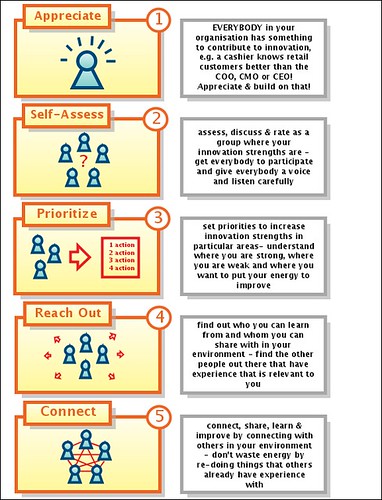Sacha Chua’s The Gen Y Guide to Web 2.0 at Work has a few things going for it. First, it is a great use of simple visuals. See you CAN draw! Second, it has a sense of humor. Third, it does a great job of communicating key ideas in 14 simple slides about how to use social media usefully as one transitions from school to work. Finally, at the core, the slides are deeply embedded with that fabulous magic, common sense.
There are two things I want to draw out of this video. The identity thing and the common sense thing. First, take a look at the slides.
Identity
I have been in conversation with Shirley Williams of Reading University about identity (see her cool site here) and she has been tracking the shift in social media use of her students as they began to explore their identity beyond university and into the workplace. This is also a topic of the CPSquare Connected Futures workshop. David Armano also has a nice post (and visual!) about this topic. What Shirley, David and others are surfacing is a skill set that might very usefully be embedded in both our educational and business organizations. A couple of weeks ago this was a key point to a presentation I made to educators in Estonia. This is a system level change. How is your organization changing to recognize how identity shows up in the era of social media?
Common Sense
Why not make a blog post about two totally different things, eh? Back to common sense. What ever happened to common sense? What the heck IS common sense? How do you define it? How does it show up in your world?
Sometimes I think the most value I bring when consulting is common sense. At other times I think I’m stating the obvious, like the village idiot. There seems to be an interesting overlap that might make us dismiss common sense as boring, not innovative, old skool. Common sense can also be our ruts, our outdated mindsets, even our bad habits. Or good habits grown irrelevant.
So how do we make the most of common sense? When is the village idiot useful?
 Now that we are a couple of months into the “signal sharing” of the
Now that we are a couple of months into the “signal sharing” of the  Toby Bloomberg is not the type to let the dust gather. She is always looking at things, asking “what can we do with that” and, rather than just asking, she starts trying and doing. She is a force to be reckoned with!
Toby Bloomberg is not the type to let the dust gather. She is always looking at things, asking “what can we do with that” and, rather than just asking, she starts trying and doing. She is a force to be reckoned with! Now that Toby is on chapter six, she has sussed out the process a bit and suggested earlier in the week that preparation is worth it, and that trying to not get carried away with too many tweets is also useful. That asks the writer to be both succinct per post (140 characters) and overall. With the size of the question Toby asked me, that was challenging. How to be brief but substantive, eh? It is harder than it looks.
Now that Toby is on chapter six, she has sussed out the process a bit and suggested earlier in the week that preparation is worth it, and that trying to not get carried away with too many tweets is also useful. That asks the writer to be both succinct per post (140 characters) and overall. With the size of the question Toby asked me, that was challenging. How to be brief but substantive, eh? It is harder than it looks. Are we pushing a medium too far or is this a useful, creative application? Or something all together different?
Are we pushing a medium too far or is this a useful, creative application? Or something all together different? I was cruising through my blog reader, hopelessly “behind” in reading (my own construction – I know I can “mark all read!”) and came upon a post from
I was cruising through my blog reader, hopelessly “behind” in reading (my own construction – I know I can “mark all read!”) and came upon a post from